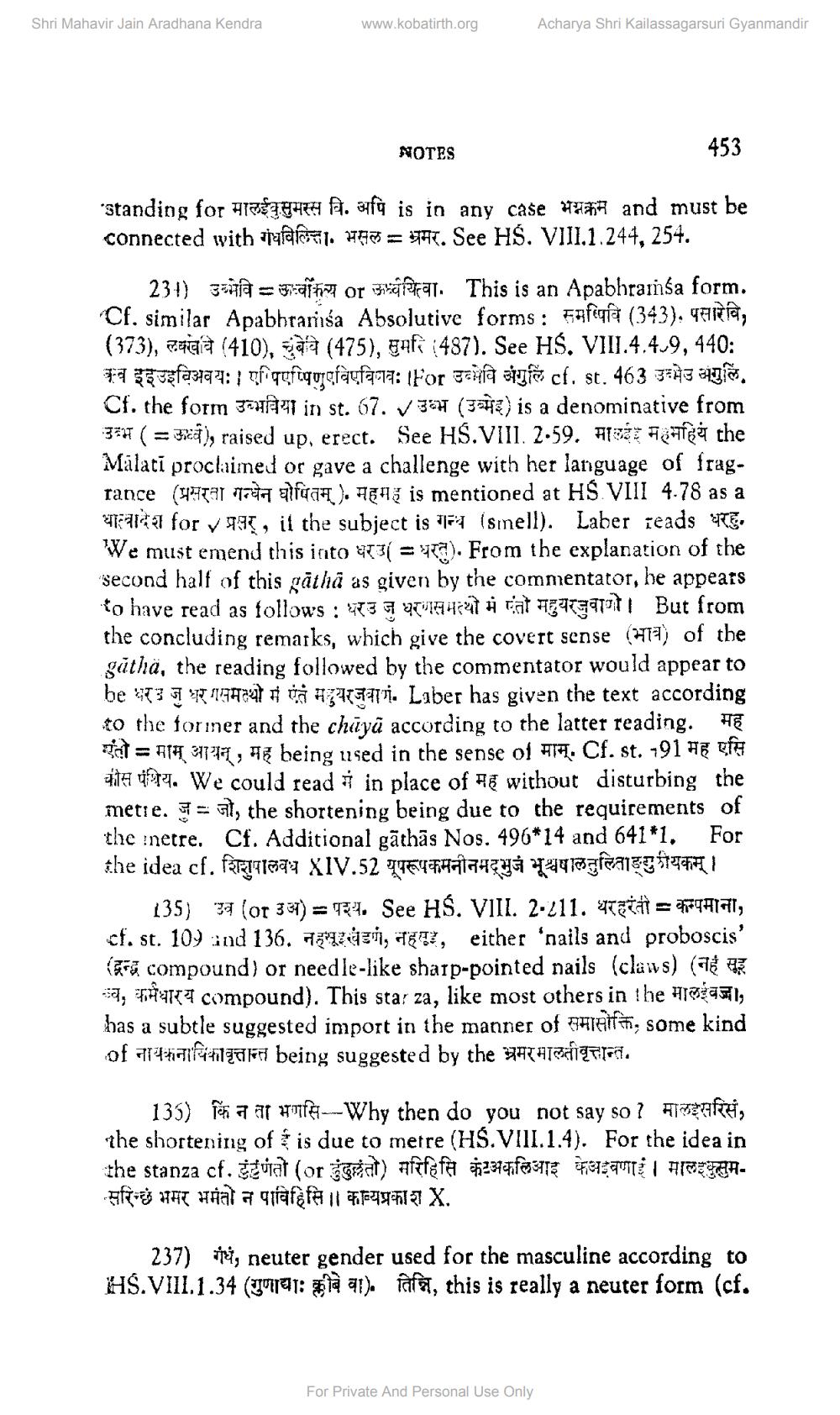________________
Shri Mahavir Jain Aradhana Kendra
www.kobatirth.org
Acharya Shri Kailassagarsuri Gyanmandir
NOTES
453
•standing for मालईवुसुमस्स वि. अपि is in any case भन्मक्रम and must be connected with famil. HS = . See HŚ. VIII.1.244, 254.
234) szita = 5:afta or appear. This is an Apabhramsa form. Cf. similar Apabhrarśa Absolutive forms: Enfeqfa (343), qarta, (373), paela (410), ala (475), gufi 487). See HS. VIII.4.4-9, 440: # gc3fa3a4: 1 fiqufiquefàufacta: (For sairastuia cf. st. 463 3713 aylēs. Cf. the form uit in st. 67. 32 (32) is a denominative from 377 ( = 3), raised up, erect. See HS.VIII. 259. HISZE FIHTCS the Mälatí proclaimed or gave a challenge with her language of fragrance (wtar 177haalfaan). 1643 is mentioned at HS VIII 4.78 as a 97747 for 1987, is the subject is 174 (smell). Laber reads We must emend this into 4731 = 4!). From the explanation of the second half of this gātha as given by the commentator, he appears to have read as follows : घर उ ज घरासमत्थो में तो महुयरजुवागो। But from the concluding remarks, which give the covert sense (3779) of the gäthä, the reading followed by the commentator would appear to be पर उजु पर गनमत्थो में एतं मयरजुवाग. Liber has given the text according to the forner and the chāyā according to the latter reading. HE
= R14 3172471, E being used in the sense of AIH. Cf. st. 191 AF TE cita 24. We could read * in place of #{ without disturbing the metie. = 5, the shortening being due to the requirements of the inetre. Cf. Additional gāthās Nos. 496*14 and 641*1. For the idea cf. friti371 XIV.52 9764174y2409170gtealeg #1241
135) 34 (or 381) = 934. See HŚ. VIII. 2-211. ATEH = lalat, cf. st. 109 and 136. zgzi, 18!?, either 'nails and proboscis' (45 compound) or needle-like sharp-pointed nails (claws) (The 57, Fire compound). This star za, like most others in the armiq, has a subtle suggested import in the manner of BATHT, some kind of 7114f algaller being suggested by the 3#THISIOTER.
135) For at af Huf-Why then do you not say so? Aletleri, the shortening of is due to metre (H$.VIII.1.4). For the idea in the stanza cf. Eduat (original) Ariffe $234feur esamte I ARETTA सरिन्छ भमर भमंतो न पाविहिसि ।। काव्यप्रकाशX.
237) ti, neuter gender used for the masculine according to HS.VIII.1.34 (Inlar: taal). Tata, this is really a neuter form (cf.
For Private And Personal Use Only




